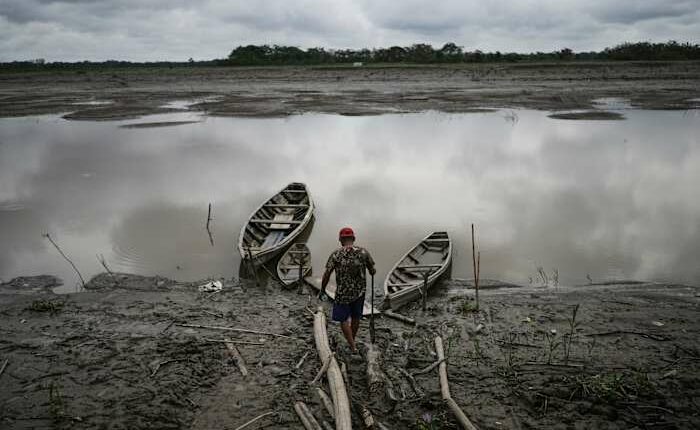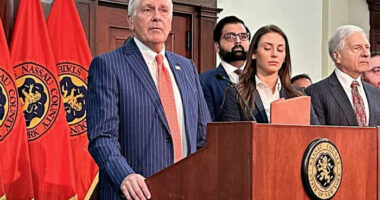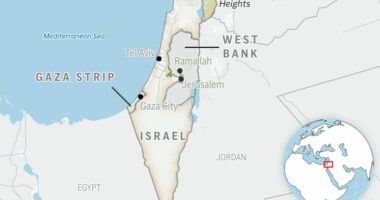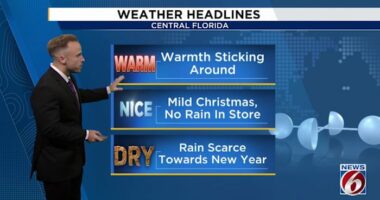Share this @internewscast.com

Every time humans cut into the Amazon rainforest or burn or destroy parts of it, they’re making people sick.
Indigenous communities have practiced this concept for millennia. A recent study published in Communications Earth & Environment further validates it by showing reduced disease occurrences in regions reserved for Indigenous peoples who manage these forests effectively.
As the upcoming United Nations climate summit approaches in Brazil this November, the study’s authors and other specialists emphasize its global relevance as negotiators tackle climate issues. Belem, the summit’s venue, serves as a gateway to the Amazon, where many attendees, from activists to officials, expect Indigenous roles in climate initiatives and conservation to receive significant focus.
“The link between humans and forests, as seen through the Indigenous lens, emphasizes mutual well-being between people and their surrounding nature,” explained Francisco Hernández Cayetano, leader of the Federation of Ticuna and Yagua Communities of the Lower Amazon (FECOTYBA) in the Peruvian Amazon. “Failing to uphold the rights and lands of Indigenous peoples ultimately jeopardizes their health, livelihoods, and the environment itself.”
Such negative impacts are exemplified by respiratory issues like asthma due to air pollution from fires or animal-transmitted diseases such as malaria, noted Paula Prist, senior program coordinator at the International Union for Conservation of Nature and study co-author.
The researchers carefully examined data on forest condition, formal acknowledgment of Indigenous territories, and disease rates in Amazon-bordering nations.
Outside experts weigh in
University of Washington health and climate expert Kristie Ebi found the study “impressive,” highlighting the complex interplay of factors impacting human health, and stressing the value of understanding Indigenous contributions. “These techniques can be applied globally to study other regions,” she suggested.
The researchers found creative ways to account for other variables that can affect the spread of diseases, like access to health care in a given area, said Magdalena Hurtado, an anthropology and global health professor at Arizona State University and a fellow of the American Academy of Arts and Sciences who was not involved with the study. But she expressed concern that the findings were presented with a precision that may not be warranted, given that they were based on correlation and use data on observations that can be difficult to measure.
“They claim that Indigenous territories only protect health when forest cover is above 40%. And so that that feels like, why 40%? Why not 35? Or why not a range?” she asked. “It doesn’t mean that the study is wrong, but it means that we need to be cautious because the patterns could change if different, more precise methods were used.”
Still, she thinks this is a starting point that could open the door to future research. “They are actually doing something quite beautiful,” empirically connecting the legal recognition of Indigenous lands to human health outcomes, she said.
Hernández, of FECOTYBA, said that’s important for the global policymakers who are coming to Brazil.
“From my Indigenous perspective, I think that this type of study would make our ancestral knowledge more visible and precise,” he said.
There’s a strong body of evidence showing that Indigenous land tenure helps maintain intact forests, but the paper shows it’s important to maintain forest outside of Indigenous-stewarded areas as well, said James MacCarthy, a wildfire research manager with the Global Forest Watch team at the World Resources Institute who worked on a new report on extreme wildfires and the role of Indigenous communities in addressing them, and who was not involved with the study.
Landscapes that produce benefits, and don’t harm human health
Prist said the goal of the study was to understand how landscapes can be healthy for people, but that it would be naive to suggest that all forest landscapes stay exactly as they are, especially with the land needs of farming and livestock production.
The world needs landscapes that provide economic services, but also services that protect people’s health, she said.
For Julia Barreto, an ecologist and data scientist who also worked on the study, it stood out to be part of a team of scientists from different nations working to make information publicly accessible and to bring attention to the Amazon.
“It is not only one country, and the whole world is depending on it somehow,” she said.
___
Associated Press writer Steven Grattan contributed to this report from Bogota, Colombia.
___
Follow Melina Walling on X @MelinaWalling and Bluesky @melinawalling.bsky.social.
___
The Associated Press’ climate and environmental coverage receives financial support from multiple private foundations. AP is solely responsible for all content. Find AP’s standards for working with philanthropies, a list of supporters and funded coverage areas at AP.org.
Copyright 2025 The Associated Press. All rights reserved. This material may not be published, broadcast, rewritten or redistributed without permission.













